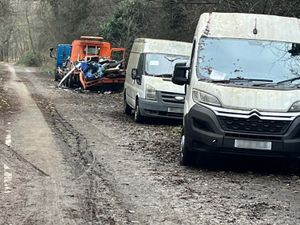Will £700k pledge end parking wars in Shropshire?
Lee Nurse talks about the time he was taken ill, and an ambulance was called to take him to hospital.
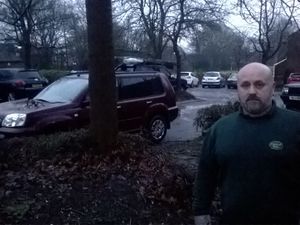
"The ambulance had to stop at the top of the street, because there was nowhere for it to park," he recalls.
"I had to be pushed up the road on a gurney."
Fortunately, the 43-year-old suffered no long-term harm as a result of the delay, but it is not hard to imagine how things could have worked out had the circumstances been slightly different.
Surveys consistently show parking is one of the biggest causes of neighbourhood disputes, with one study identifying that 32 per cent of all fall-outs were caused by parking problems.
And Mr Nurse's predicament, in the Randlay area of Telford, highlights a growing problem on purpose-built estates where the planners did not envisage the growth in car ownership which has taken place over the past 40 or 50 years.
Mr Nurse points to the tyre tracks still fresh on the vast grass verge at the end of Brands Farm Way.
See also:
"If somebody parks behind you, that is the only way you can get your car out," he says.
"People regularly drive about 50-60 yards across the grass to get out because somebody has parked behind them.
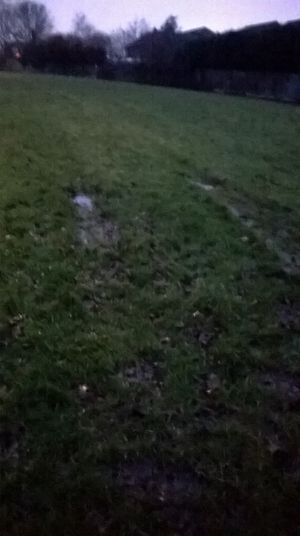
"These housing estates were built in the 1960s and 1970s when the households were mainly one-car families, and some did not have a car at all," says Mr Nurse, who works as a wood machinist.
"These days most households have two people who go out to work, so they will need a car, and then if you have got children the time will come when they learn to drive."
Part of the problem in Telford stems from the estates that were built to the Radburn design, an offshoot of the garden cities movement which sought to separate residents from the traffic.
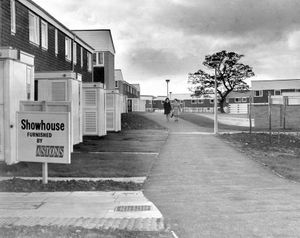
Instead of fronting onto the street, and having their own private driveways, the houses were built to face communal grassed areas, where it was envisaged that children would be able to play and families interact.
At least that was the theory in the utopian word of 1960s town planning. The reality has proved somewhat different, and Mr Nurse says disputes about parking have done little for neighbourly relations.
"It is creating tensions between neighbours," he says.
"It's frustrating. I have had altercations with a neighbour, sometimes it can't be helped. People come to visit, your parents might come, and there's nowhere to park."
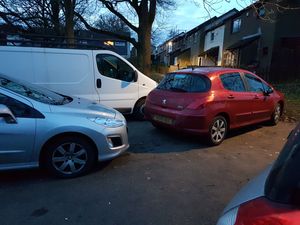
His wife Helen, 36, who has lived in her house for 14 years, adds: "We have probably got too many trees that are overgrown."
Councillor Connor Furnival, who represents the Nedge ward in Telford, says the situation faced by residents in Brands Farm Way is totally unacceptable.
He says: "I couldn't believe it when I saw it, to access the road from a residents' car park they sometimes have to drive across a grass verge to the side of the bus stop. It's ridiculous."
And he says it is far from a isolated problem, with similar problems in the Dunsheath, Boulton Grange, Churncote, Chirbury and Dodmoor Grange areas of his ward, all doing little to create harmonious relations in the community.

"Parking issues in my ward are causing communal disputes and hostility and as a local councillor I am contacted with the question of what can I do," says Councillor Furnival.
"Its all good building new homes and bringing in investment into the borough, but we have to think of the residents who already live here and have been increasingly affected by these issues for many years."
It is not a problem that is confined to Telford, or indeed to housing developments from the 1960s or 70s.
Fire access
With its narrow streets of densely packed Victorian terraces, the residential fringes of Shrewsbury town centre have problems of their own.
The issue was raised by Malcolm Stevenson of Shropshire Fire and Rescue Service in December 2016, when he voiced concerns that fire engines were having difficulty navigating some streets.
He said one of the major problems was cars parked too close to junctions.
“We recently had a problem in Castlefields in Shrewsbury where badly parked vehicles stopped the fire service from getting within 100 metres of a small fire," he said.
"Fire engines are big vehicles which need lots of room to get round corners and down narrow roads."
He said on another occasion crews in Market Drayton had to run down a street with heavy hoses as they could not reach a property.
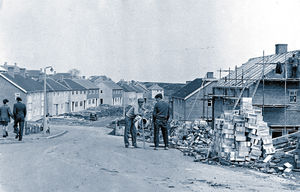
Another time, also in Market Drayton, firefighters had to wait while drivers came out of their homes to parked cars parked alongside Frogmore Road before they could reach a house fire.
Mr Stevenson appealed for people to think about how a fire engine would get past in an emergency when they parked their cars.
The fire service does stress, though, that such incidents are not commonplace, and that the fire service will always find a way to get to a property.
Working together
In the Mountfield area of Shrewsbury, residents dealt with the problem by coming up with their own set of protocols for double parking.
Neighbours agreed among themselves who would need to use their cars at certain times, and who did not mind being blocked in at certain times.
But while this might have worked in one particular area, it would probably be hard to replicate elsewhere.
There is light at the end of the tunnel, at least in Telford. In its budget, which was agreed this month, Telford & Wrekin Council is to make an extra £700,000 available to improve estate parking in the borough.
Councillor Mrs Angela McClements, cabinet member for transport, says: “We plan to deliver at least 400 additional parking spaces in our urban residential areas to address parking challenges as part of our £45 million Pride In Our Community programme of investment."
Councillor Furnival has already begun looking at the options to improve matters in Brands Farm Way, and hopes that similar improvements can be made elsewhere.
"As the population grows more and more people are getting cars, their children are buying cars and for estates which were built for one car per property it just doesn’t work," he says.
"Now it appears that something can be done.”




